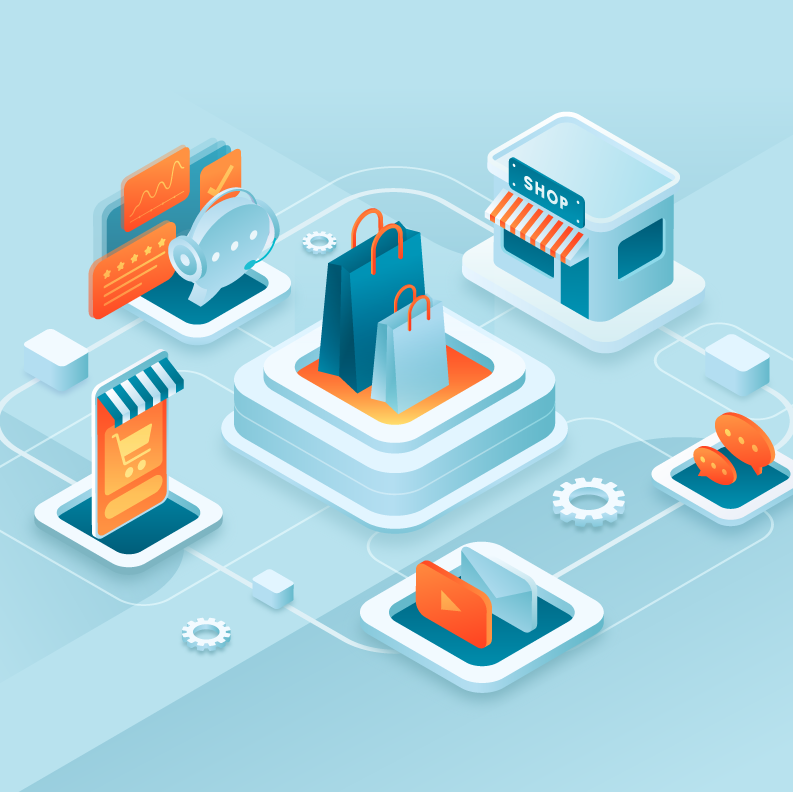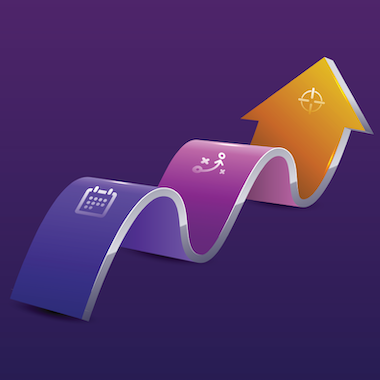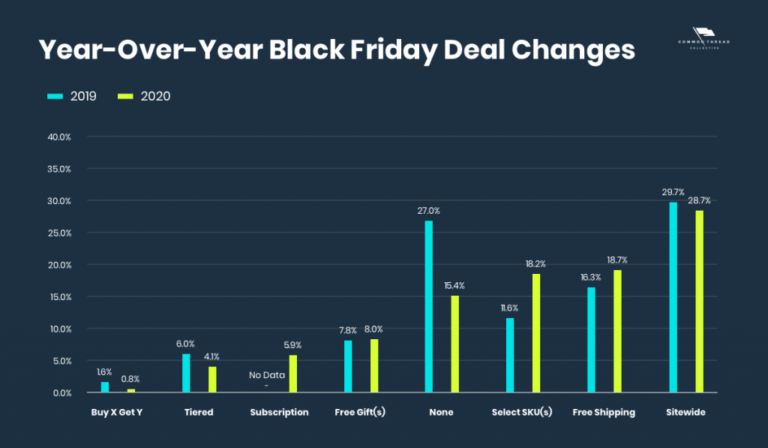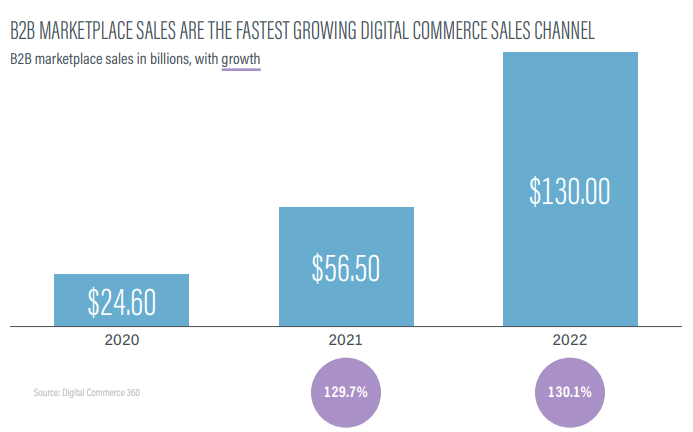
“Digital touchpoints” is a fancy way of saying “customer interactions.” In the old days, this was as simple as talking to shoppers in the store or helping them at checkout. Today, there are numerous ways consumers can come in contact with your brand, and it’s important to be at every one.
The problem is, in the digital world, you may not always know when and where that is. According to our annual consumer survey, 70% of shoppers visit between two and four websites before making a purchase. The sheer volume of online buying options means there’s no surefire way to know precisely how people discover your products — or what they’ll do next.
But that doesn’t mean you can’t be prepared to meet their expectations. Let’s take a look at the most common digital touchpoints that should be a part of every online seller’s strategy.
What Are Digital Touchpoints?
Digital touchpoints are the instances when a customer comes in contact with your brand, whether directly or indirectly, through online channels.
Digital touchpoints occur in specific stages of the funnel or buyer journey. This includes three main phases before and during purchase:
- Awareness
- Consideration
- Purchase/decision
It can (and should) also include two post-purchase phases that account for long-term customer relationships:
- Retention
- Loyalty/advocacy
Awareness Digital Touchpoints
In this stage, consumers may not be aware of your brand yet or their need for your product. Online advertising and promotion puts your name in their line of sight so they begin developing familiarity with your company and its products.
- Marketplaces and online shopping storefronts. Marketplaces play a huge role in the buyer journey, even well before purchase. Today, 52% of US consumers who are ready to buy head to Amazon just to begin their search. If you want to maximize visibility and get your products in front of as many purchase-ready consumers as possible, having a robust Amazon Advertising strategy in place is critical. Sponsored Products, Sponsored Brands and Product Display Ads are all highly visible to (and frequently used by) consumers.
- Search engine ads. When they’re researching products, 44% of consumers head to a search engine to start their journey. Paid search ads help ensure your listings appear early and often in front of the right consumers at the right time.
Google Shopping surfaces your products as people browse for ideas and compare prices. While virtually every advertiser runs some kind of ad program through Google, only a small percentage of that massive base uses Google Shopping. Once you get good at Google Shopping, the payoff can be tremendous.
- Social media marketing. Social media platforms like TikTok are highly influential to consumers. Our survey found 23% of shoppers made a purchase of products they’ve discovered on social media. These platforms allow you to tell the stories behind your products, providing helpful content or industry information that can quickly elevate your reputation with customers. Try sharing lifestyle photos, providing tips or discussing the release of upcoming lines.
You can also use dynamic ads to retarget. The wide variety of advertising formats available to e-commerce sellers on social media makes it possible to connect with consumers in ways that aren’t possible on other channels. Facebook and Instagram offer especially robust options that can help shrink the path to purchase from weeks or months to days or hours.
- Video ads. YouTube ads can turn viewer attention to new movie releases, new products and other websites even when consumers aren’t in a typical buying environment. By pairing ads with related video content (e.g., hair product ads on makeup tutorials), you can target audiences better and raise their awareness of your products.
- Peer recommendations. Consumers trust their friends and family more than any other medium. Peer recommendations are critical for raising awareness to new audiences, but they’re also out of your control. Instead, encourage peer referrals by showcasing user-generated content (e.g., social media posts or unboxing videos) and making all your customer content shareable.
- Sponsorships and company events. Sponsoring large events like games, awards shows, concerts and community functions puts your name in front of large audiences who may not otherwise interact with your brand. Hosting a conference also creates buzz around your products and industry, drawing new customers and interested parties.
Consideration Digital Touchpoints
In this stage, shoppers are further down the funnel, but they still haven’t purchased. This makes it critical to demonstrate why your product or brand is better than another through proof points and comparisons.
- Blogs. Blogs give you more space to state your case and explain the intricacies of your product(s). Consumers who go off in search of answers to a general question (i.e., “What products are best for curly hair?”) may stumble upon educational blogs from haircare companies that feature products for purchase.
- Email campaigns. Engage prospective buyers at different points to give them a taste of your brand over time. First, make email sign-up easy and apparent on your website to capture newcomers at the start of their journey. Then, experiment with a variety of message types from educational to competitor analysis to sales and promotions.
- Thought leadership. Modern consumers crave content. Whitepapers, case studies, infographics and other resources satisfy their need to become educated and secure proof of brand or product trustworthiness before making the leap to purchase.
- Marketplace listings. The better your marketplace content, the more likely a listing is to rise to the top of search results and compel people to purchase. Check the quality of your titles, descriptions, bullet points and images to not only rank higher but proactively answer prospective buyers’ questions about your products (e.g., “What’s it made of?” or “How many come in a pack?”).
Decision Digital Touchpoints
More happens at the purchase stage than simply hitting the buy button. Consider all the ways you can influence consumers at the point of purchase and immediately after.
- Chat/customer support. If shoppers have questions, how are you answering? Website bots and chat support provide quick access to answers when buyers need that final validation to make their purchase.
- Online forums and shopper reviews. Consumers of all ages are in the habit of referencing reviews before making a purchase. In fact, 49% of people trust online reviews as much as personal recommendations. Encourage this important digital touchpoint by inviting shoppers to rate and review products after purchase via triggered email campaigns or app notifications.
You should also closely monitor the reviews that come in about your brand and products. This way, you can stay in tune with areas where improvements may be needed (e.g., product quality, customer service, packaging) Responding to reviews also demonstrates you care about customer feedback and want to make their experiences better.
- Point of sale. Don’t forget the online shopping cart and purchase screen as a final touchpoint to boost sales. “You may also consider” modules and “Other items we think you’ll enjoy” options remind shoppers of complementary items and showcase your full portfolio in case they want to make a future purchase.
- Fulfillment and shipping. Once an order is placed, your fulfillment experience will directly influence customer satisfaction, repeat purchases and loyalty. Consumers may abandon the shopping cart if shipping is too expensive or cancel the order altogether if it’s too slow. Automate your fulfillment to quickly identify fast, low-cost options and route each order to the most cost-effective carrier. It’s also one of the best ways to protect your margins while meeting consumer expectations for fast delivery times.
Retention Digital Touchpoints
Don’t let new customers get away too fast. After purchase, help foster retention for eventual repurchase and loyalty with retention touchpoints such as:
- Customer surveys. Show new customers you care about their experience. Display a short customer survey immediately after the online purchase is complete, or send a follow-up survey that accounts for all brand touchpoints they experienced.
- Email newsletters. Keep new members and customers engaged beyond purchase with regular email newsletters that educate them on current trends, new products, industry news, etc. Then, pepper the content with links to relevant products to keep customers coming back.
- Brand apps. Repeat customers benefit from creating an account (versus purchasing as a guest) and downloading your app when they make future purchases. Offer app-only features and benefits (e.g., interactive maps and functionality) that encourage them to sign up and engage deeper with your brand.
Loyalty Digital Touchpoints
Loyal customers don’t just keep coming back — they’re fans who advocate for the brand. These touchpoints not only keep buyers engaged, but start the cycle over again by encouraging referrals for new business.
- Rewards programs. The benefits of rewards/loyalty programs are twofold: You gain insight into customers’ shopping behavior, while they receive special promotions to make future purchases. Most rewards programs are free for this reason, and they allow customers to demonstrate their loyalty by accounting for future purchases and brand interactions.
- Anniversary emails. Reward customers for their loyalty by acknowledging their fanship. Trigger emails on the anniversary of their first purchase or rewards membership to demonstrate how much your brand values its most engaged customers.
- Referral programs. Let your biggest brand advocates do your marketing for you! Encourage customers to refer a friend for a valuable reward like a free item, gift card or large discount, helping you locate new audiences without conducting the search yourself.
How many ways do potential customers come in contact with your brand? If charting the entire path is too overwhelming, take it to the experts. ChannelAdvisor Managed Services will raise your awareness to all the possible ways you can influence purchases, whether consumers have never heard of you or they’re your biggest fans.
Contact us today to learn how ChannelAdvisor Managed Services can help optimize your digital touchpoints at every stage of the buyer journey.





